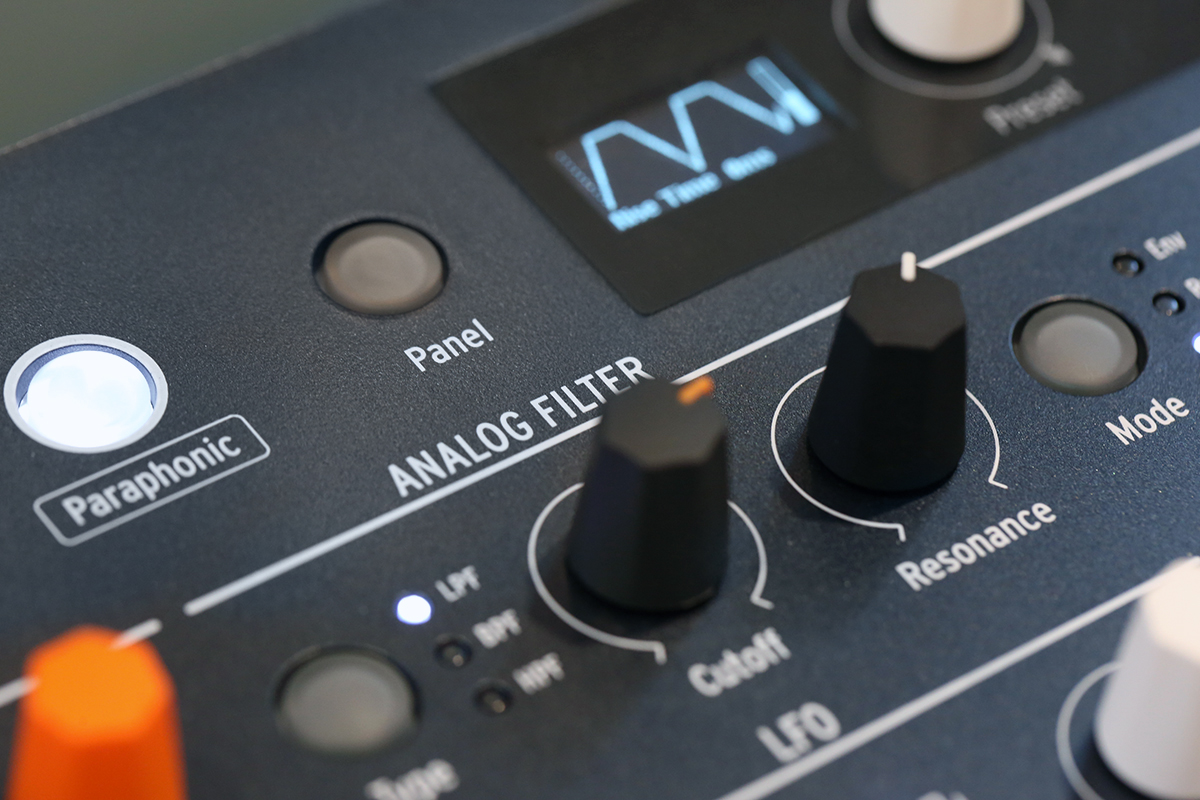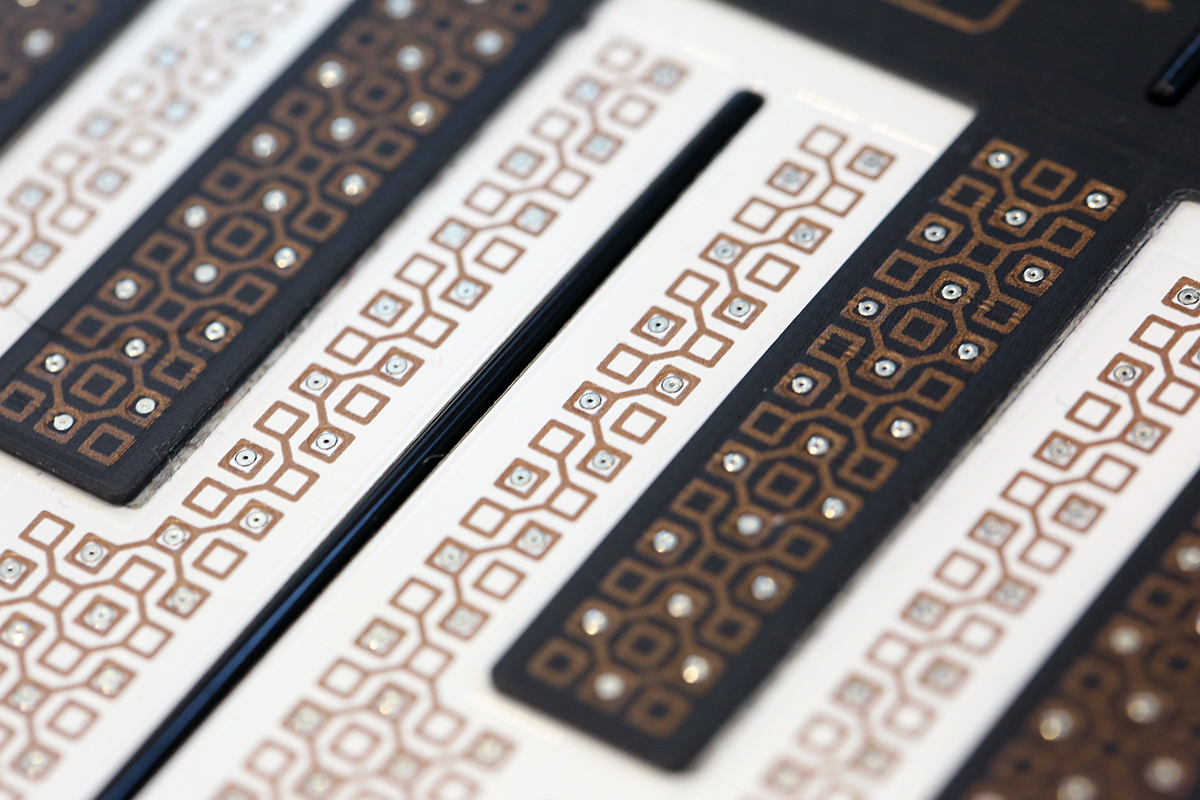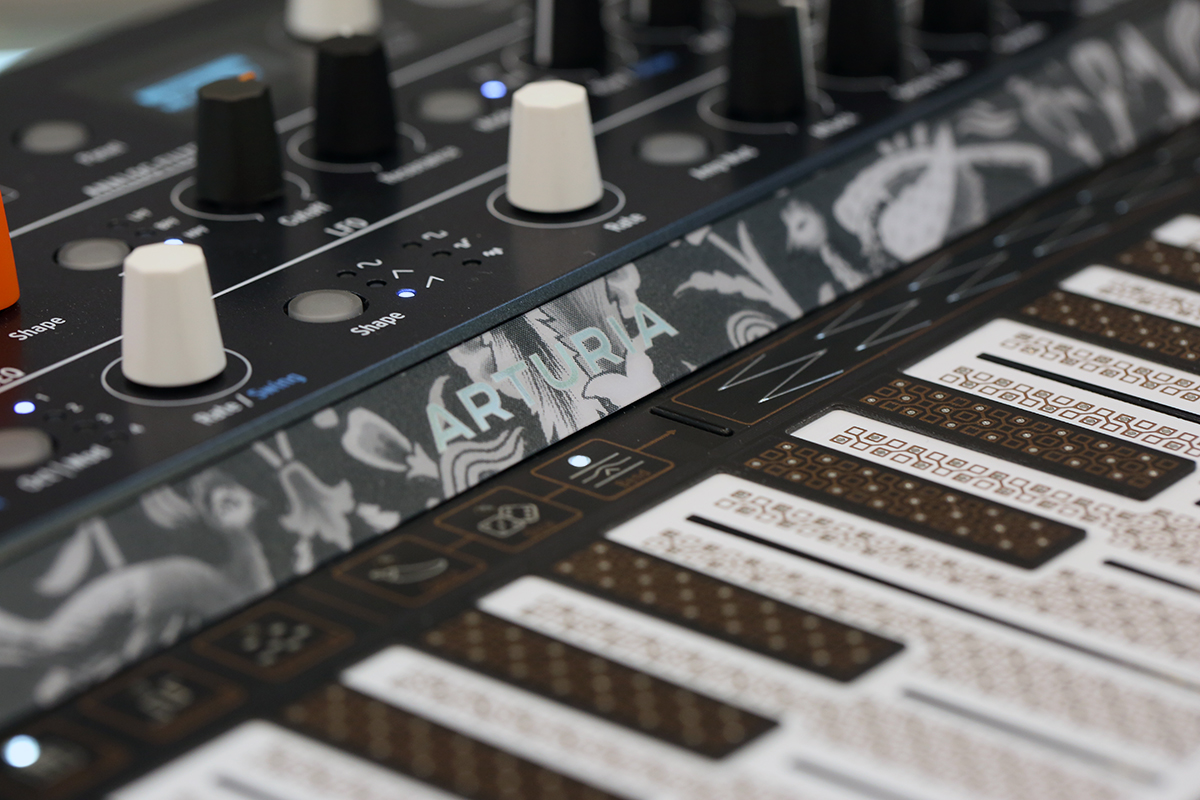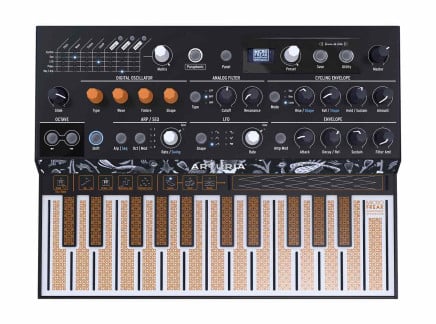The Microfreak is Arturia's newest hardware synth—a clear departure from the spirit of the Brute family of synths before it. While it has a similar footprint to the Microbrute, its ethos is quite different: gone is the purely analog signal path, with a much more peculiar and (if I may say so) more distinctive sound engine taking place of the classic monosynth architecture.
Microfreak is digital to the core, and takes advantage of some of the nicest advantages a digital instrument may offer: tons of options for sound creation, increased polyphony, and complex control routing not easily possible with all-analog designs.
Multimodal Sound in a Tiny Box
The Microfreak's voice architecture is anything but standard: a paraphonic synth with polyphonic modulation options, a digital sound generation engine, and a single analog filter.
The oscillator section offers the user a choice of several different modes of operation: standard synth waveshapes are available, as are more esoteric synthesis methods ranging from FM and wavefolding to Karplus-Strong and modal synthesis. In my book, this is a very welcome change from the standard subtractive architecture—monosynths are awesome, but there are an awful lot of them out there that all cover similar ground. It seems like unabashedly digital synths are back in vogue, though—after years of Virtual Analog and a true analog Renaissance, synth manufacturers are coming back around to all the magic that digital synthesis and digital control can offer.
 Detail of the Microfreak's analog filter and waveshape display.
Detail of the Microfreak's analog filter and waveshape display.
While proud digital synths can be as sophisticated and hefty as the Waldorf Quantum, the Microfreak proves that a powerful sound engine can be provided in a tiny package and a low price. Having an affordable keyboard synth with a modal synthesis engine, for instance, is simply unprecedented—in fact, many of the techniques available in the Microfreak have in the past been the fare of only software, rare/expensive hardware, and Eurorack modules. Being able to explore these peculiar techniques without having to spend a substantial amount of money and without needing substantial computer science knowledge is a tremendous blessing, and I am personally super excited that Arturia found a way to get these techniques into people's hands at a truly reasonable price point.
Several of the algorithms available in the Microfreak were adapted from the Mutable Instruments Plaits, one of the most popular and flexible Eurorack sound sources to date. Plaits is itself a multimode oscillator/sound source capable of a wide range of different synthesis methods—it makes sense that Arturia would turn to Mutable Instruments designs for source material, as the Microfreak seems to bear much of the same spirit as Mutable's offerings. Both seek to provide an approachable means of utilizing a wide array of advanced synthesis methods without needing an extensive DSP & computer science background, and both do so in their own inviting and colorful ways.
Paraphony...or Is It?
The Microfreak is paraphonic in the sense that its (up to) four internal oscillators may be individually addressed by the keyboard, but they all share a common filter (and therefore mostly share common articulation). Where the Microfreak differs from the majority of paraphonic synths is that, depending on how the user sets up a patch, a form of polyphony becomes available.
 Detail of the Microfreak's PCB-based touch keyboard.
Detail of the Microfreak's PCB-based touch keyboard.
Each digital oscillator offers a switchable digital VCA. With Amp Mod set to "On," these VCAs can be impacted by duplicated versions of the main envelope, creating a polyphonic structure that precedes the filter, for an odd hybrid of polyphonic and paraphonic behavior. And of course, several oscillator modes themselves do not rely on droning oscillators, and therefore transcend the need for individual VCAs for each oscillator: the physical modeling presets fall into this camp. So, calling the Microfreak paraphonic is a bit reductive—there are several ways that polyphonic behavior can be coaxed out of it.
To further confuse matters, the Microfreak does offer some polyphonic modulation options as well. Keyboard pressure, for instance, is a fully polyphonic modulation source: so when routed to polyphonic destinations, such as the various oscillator parameters, independent note-by-note modulation can be applied. This breaches past typical paraphonic behavior, turning the Microfreak into an extensively flexible instrument not easily classified as simply paraphonic.

Of course, the Microfreak is full of other oddities: a looping envelope, arpeggiator and sequencer with options for complex pattern generation and randomization, PCB-based touchplate keyboard, SEM-style analog VCF...the list goes on. With CV & Gate support, MIDI via 1/8" TRS and USB, optional USB power, and an extensive routing matrix, it will no doubt find a home in setups of all types—from modular enthusiasts and keyboardists to absolute electronic music newcomers.
For me, the most exciting features are the full embrace of peculiar synthesis techniques and the clever implementation of pseudo-polyphonic behavior—but there is clearly an immense collection of possibilities hiding within this remarkably small keyboard, warranting more in-depth exploration than we can possibly offer in this short article. Come by our shop or pick one up to dig in yourself—you'll no doubt find a world of sounds that ranges from strange to satisfying, outlandish to inspiring.








